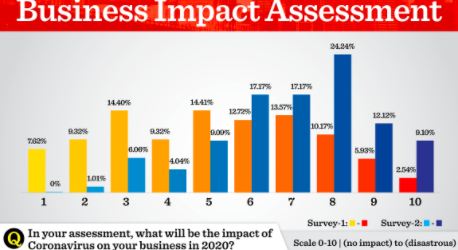Survey on The Impacts of Post-COVID Funding

By Debbie Gregory.
To overcome the economic impact of the COVID-19 pandemic, many small businesses are being forced to seek external funding through alternative funding sources, government grants, and loans from traditional banking institutions.
You may whether small businesses normally applied for loans or is this a new behavior in response to the pandemic?
Earlier this year, Small Biz Ahead surveyed small business owners across the country to learn exactly how the pandemic was affecting their use of both traditional and alternative funding. Here is what the survey found:
Starting a New Business:
Prior to the pandemic, most small business owners were hesitant to use external funding sources.
- Less than 1% used a federal or state grant to start their business.
- 60% of all small business owners used their own personal savings to start or run their businesses.
Running an Established Business:
- 85% of small businesses sought zero external funding in the last three years.
- 28% of small business owners use their personal credit cards to pay for business expenses.
- If the business did need money, they were more likely to seek out traditional funding sources as 41% stated they would go to their main bank first.
- 25% stated that they would simply use credit cards or existing funds.
Does age affect the business owner’s thoughts on external financing?
They found that younger generations tend to be more open to applying for financing or loans though they are still a bit hesitant. However, they do typically turn to friends and family for loans first. The study found that about a third of small business owners between the ages of 18-34 currently use friends and family as their main source to finance their business. This drops dramatically for generations older than 34, just over 10% of 35-44 year olds and less than 2% of 45-54 year olds stated that they seek out loans from friends or family.
What do small business owners look for when selecting a financial provider?
The small business owners surveyed:
- 38% stated that interest rates are the most important factor in choosing where to obtain funding.
- 38% stated that the terms and conditions were the most important factor.
- 34% prefer a financial provider who they know and have a relationship.
Does gender affect where the business owner will look for financing?
The study found that men (38%) are much more likely to view an existing relationships as the most important factor when selecting a financial provider, whereas women (41%) typically go out of their way to look for less expensive funding and lower interest rates.
How Does Age Impact Funding Choices?
There was also a clear divide between the age groups:
- The 18-34 age group favored institutions that offered easy applications,
- The 35-64 age group favored institutions with less expensive loans and more competitive rates
- The 65 and over age group favored institutions that they had a prior financial relationship.
What about alternative funding (such as crowdfunding or peer-to-peer)?
According to the study, alternative financing is not used very often by small business owners in the USA:
- 2% of small businesses have used equity financing.
- 4% have used P2P (peer-to-peer) lending.
However, this is changing. Many small business owners (42%) stated that they were open to the possibility of using alternative financing in the future should the need arise. The 18-34 age group were the most comfortable with alternative financing options:
- More than 10% stated that they have used P2P lending.
- A bit over 5% stated that they have used crowdfunding.
- All in this group stated that they would consider using alternatives to traditional finance in the future.
VAMBOA, the Veterans and Military Small Business Owners Association wants to learn your opinions on financing and small business funding. Have you needed to turn to external financing to survive the pandemic? Please let us know by emailing us:
If you are not yet a member of VAMBOA, we invite you to join. There are not any fees or dues and you may use our seal on your collateral and website. Below is a link to register to become a VAMBOA member:












